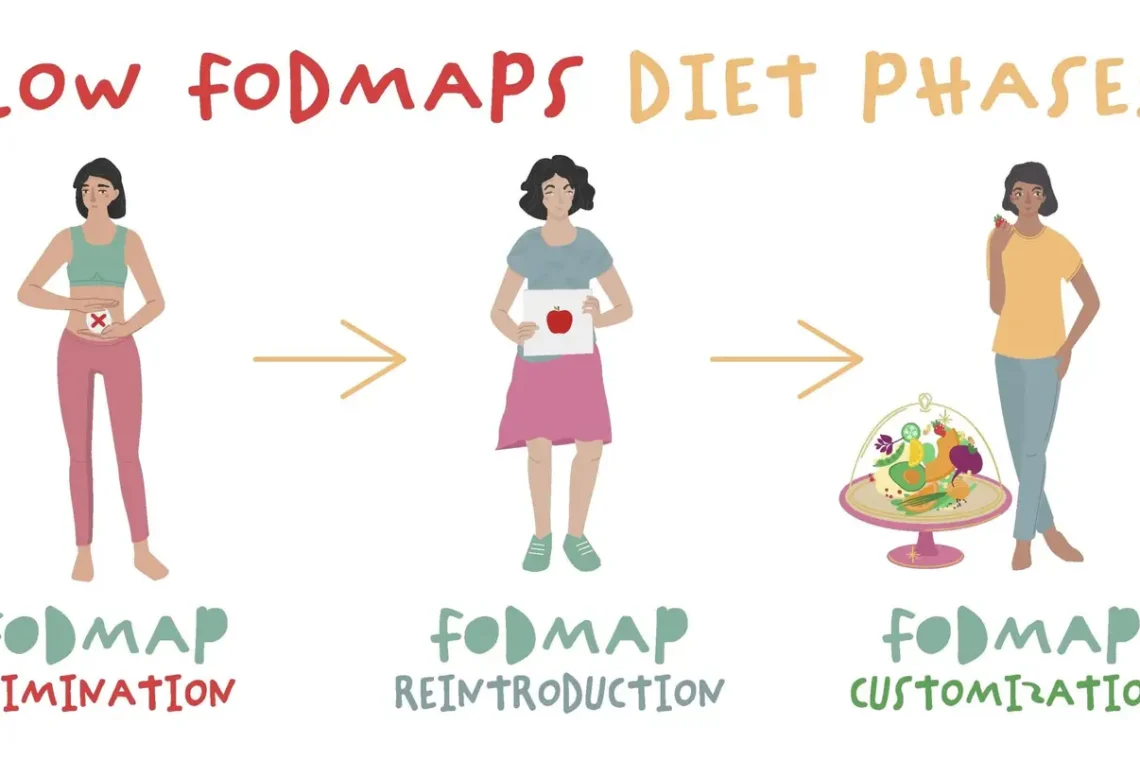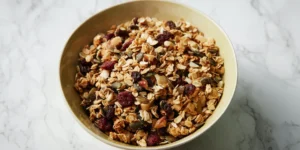Key Takeaways
- Overview of the Low FODMAP diet and its benefits.
- Step-by-step guide on implementing the diet.
- Tips for managing common digestive issues with the Low FODMAP diet.
- FAQs about the Low FODMAP diet.
Introduction
The Low FODMAP diet has become a cornerstone for managing digestive issues, particularly Irritable Bowel Syndrome (IBS). This dietary approach focuses on reducing certain carbohydrates, providing relief from symptoms such as bloating, gas, diarrhoea and abdominal pain. At Orla Walsh Nutrition, we believe in the power of evidence-based dietary interventions to improve quality of life.
What is the Low FODMAP Diet?
The Low FODMAP diet was developed by researchers at Monash University in Australia. FODMAPs are a group of short-chain carbohydrates and sugar alcohols found in various foods. They include:
- Fermentable Oligosaccharides: Found in wheat, onions, garlic.
- Disaccharides: Found in milk, yogurt, and soft cheese.
- Monosaccharides: Found in fruits like apples, honey, and high-fructose corn syrup.
- Polyols: Found in certain fruits and artificial sweeteners.
These carbohydrates can cause symptoms in sensitive individuals. When they pass through the small intestine, they can draw water into the gut resulting in bloating, pain/ discomfort and diarrhoea. When they pass through the large intestine, where a lot of bacteria live, the bacteria can eat them and release gas, leading to bloating, flatulence and pain/ discomfort.
Benefits of the Low FODMAP Diet
- Symptom Relief: Reduces symptoms of IBS and other functional gastrointestinal disorders.
- Improved Gut Health: Some people live on a restricted diet when they suffer badly with gut issues. Although the diet is initially restricting food choice, it can lead to an increase in variety and foods in a person’s diet. This can help in managing gut bacteria and overall gut health.
- Personalized Approach: Tailored to individual tolerance levels, allowing for personalized dietary adjustments.
Implementing the Low FODMAP Diet
Step-by-Step Guide
- Elimination Phase:
- Duration: Typically lasts 4-6 weeks.
- Objective: Avoiding all high FODMAP foods.
- Foods to Avoid: Wheat, dairy, certain fruits and vegetables, legumes, certain sweeteners.
- Reintroduction Phase:
- Duration: Varies per individual, generally 6-8 weeks.
- Objective: Systematically reintroduce high FODMAP foods to identify specific triggers.
- Process: Introduce one FODMAP group at a time, monitoring symptoms for 3-4 days before introducing the next group.
- Personalization Phase:
- Objective: Develop a long-term, balanced diet based on tolerance levels.
- Focus: Maintain a varied diet to ensure nutritional adequacy while avoiding triggers.
Tips for Success
- Plan Ahead: Prepare meals and snacks in advance to avoid high FODMAP foods.
- Read Labels: Check food labels for hidden FODMAP ingredients.
- Consult a Dietitian: Work with a dietitian to ensure nutritional needs are met. We provide meal ideas and advice on what brands of food are low in FODMAPs.
Examples of Foods to Eat and Avoid
Low FODMAP Foods
- Proteins: Chicken, fish, eggs, tofu.
- Grains: Rice, quinoa, gluten-free bread.
- Fruits: Bananas (yellow/ green), raspberries, grapes.
- Vegetables: Carrots, spinach, zucchini/ courgette.
- Dairy Alternatives: Lactose-free milk, almond milk.
High FODMAP Foods
- Proteins: Some sausages, Some processed meats.
- Grains: Wheat, rye, barley.
- Fruits: Apples, pears, watermelon.
- Vegetables: Onions, garlic, cauliflower.
- Dairy: Milk, yogurt, certain soft cheese.
Sample Meal Plan
| Meal | Food Items |
| Breakfast | Scrambled eggs with spinach and tomatoes, gluten-free toast |
| Snack | Lactose-free yogurt with blueberries |
| Lunch | Grilled chicken salad with mixed greens, quinoa |
| Snack | Rice cakes with peanut butter |
| Dinner | Baked salmon with carrots and zucchini/ courgette, rice |
| Dessert | Strawberries with dark chocolate |
Managing Digestive Issues with Low FODMAP
The Low FODMAP diet has shown significant benefits for managing IBS and other digestive issues. It helps reduce bloating, gas, and abdominal pain by eliminating problematic foods. At Orla Walsh Nutrition, we provide personalised guidance to ensure the diet is effective and sustainable.
FAQs about the Low FODMAP Diet
- What is the Low FODMAP diet? The Low FODMAP diet is a dietary approach designed to reduce symptoms of IBS and other digestive disorders by eliminating specific short-chain carbohydrates that are poorly absorbed in the small intestine.
- Who can benefit from the Low FODMAP diet? Individuals with IBS, small intestinal bacterial overgrowth (SIBO), or other functional gastrointestinal disorders can benefit from this diet.
- How long should one follow the Low FODMAP diet? The initial elimination phase lasts 4-6 weeks, followed by a reintroduction phase of 6-8 weeks. Long-term adherence depends on individual tolerance levels identified during the reintroduction phase. If this feels too much for you, and isn’t suitable for you based on your medical history, we can also how it is done to avoid the restrictive phase.
- Are there any risks associated with the Low FODMAP diet? The diet should be followed under the guidance of a dietitian to ensure nutritional adequacy and avoid potential deficiencies.
- Can children follow the Low FODMAP diet? Yes, but it should be supervised by a healthcare professional to ensure their nutritional needs are met.
Conclusion
The Low FODMAP diet offers a structured approach to managing digestive issues, particularly IBS. With proper guidance and planning, it can significantly improve quality of life. For personalized advice, consider booking a consultation with Orla Walsh Nutrition.











